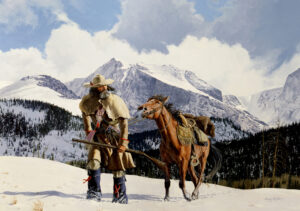Frank Sinatra never met George Gershwin. When the 38-year-old composer died in 1937, Sinatra was just a skinny young man from Hoboken, New Jersey, with dreams of hitting the big time. It wasn’t until 1939 that Sinatra joined trumpeter Harry James’s band and began his rise to fame. (“No one’s ever heard of him,” James said. “He’s never had a hit record, and he looks like a wet rag, but he says he’s the greatest.”)
Gershwin and Sinatra did meet musically, though. Sinatra recorded a number of Gershwin songs during his long career. Those that come immediately to mind are “They Can’t Take That Away From Me,” “Embraceable You,” “Love Is Here to Stay,” “Nice Work If You Can Get It,” “I’ve Got a Crush on You”–and the list goes on.
When Sinatra died at 82 last May, it seemed like the Great American Popular Song–the standard–died with him. In the book Sinatra! The Song Is You, author Will Friedwald writes, “It’s true that no one introduced more standards then Fred Astaire, who had all the major Broadway legends almost simultaneously penning film scores for him. But no performer turned more songs into standards then Sinatra, including a great many of the numbers written for Astaire.”
Astaire’s gone, even if you can see him on TV dancing with a vacuum cleaner in an appalling recent commercial. Ella Fitzgerald’s death in 1996 was another great blow. At least we still have Tony Bennett, who has sung a Gershwin tune or two in his time. The songs of George and Ira Gershwin, Cole Porter, Rodgers and Hart, Irving Berlin, and their like seem more than ever to be a product of another age, leading to the lament that “No one writes ’em like that anymore.”
There are a number of reasons why. One is that the great source of popular songs–Broadway–has pretty much dried up, or at least slowed to a trickle. Gershwin wrote for musicals when Broadway was at its peak. It was a competitive, demanding environment and only the strongest–and most talented–could survive. Gershwin not only survived, he thrived.
And then there’s rock and roll. Love it or hate it, it led to great changes in popular music. Sinatra sneered at rock, although he once recorded a song called “Everybody’s Twistin'”(and Elvis Presley appeared on one of his television shows). I’m not going to join in the condemnation–I happen to love rock and roll, just as I love Sinatra. But when rock came along–especially after the Beatles conquered America–people expected performers to write their own music, and that shifted the emphasis from the song to the performance. Gershwin sold songs; the Beatles sold records. As a result, songs often become inextricably linked to a single performance, and a singer-songwriter’s songs don’t always work for another performer. During the late 1960s and early 1970s, Sinatra struggled to connect with his audience by singing songs such as Simon and Garfunkel’s “Mrs. Robinson,” or “Downtown,” a big hit for Petula Clark. It didn’t work.
Sinatra and Gershwin had something else in common. Both came from humble urban backgrounds, yet both grew up to embody a sense of American sophistication. Gershwin lived the role. Sinatra, for all of his tumultuous personal life, took naturally to the cosmopolitan lyrics by the likes of Ira Gershwin and Cole Porter. Sinatra and Gershwin both grew into their tuxedos.
Times change, and tastes change with them. Fortunately for us, Sinatra’s recordings and Gershwin’s music will be with us as long as we can hear them–on record, tape, CD or whatever recording technology comes along next. The songs will stay alive, even if they never do write ’em like that again.
Tom Huntington, Editor, American History




